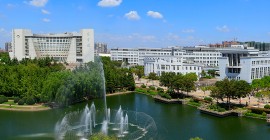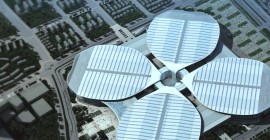[Abstract] Rejuvenation is relative to decline. Proposing the great rejuvenation of the Chinese nation is a collective reflection of modern China's "backwardness leads to beatings". The impetus for rejuvenation is deeply buried under the national deaths and humiliations. As a national communication platform between the state and its citizens and a major initiative at the national level, national memorial ceremonies build a communication bridge from deaths to rejuvenation against the backdrop of national rejuvenation, taking deaths as the communication starting point and national rejuvenation as the ceremonial orientation. It has become an important channel for contemporary national rejuvenation to crystallize rejuvenation consensus and tap rejuvenation great strength from the history of modern decline. With the characteristics of emotion-centered communication, national memorial ceremonies are the only domestic common emotional bond of the nation aimed to evoke sentiments for national rejuvenation and contribute to national rejuvenation based on the theme of deaths.
The communication of national memorial ceremonies unfolds under the leading of the host, structured by the narratives of deaths and rejuvenation. The former contains the ceremony time and space and memorial display; the latter consists of ceremonial speech and peace display. In the ceremony time and space, the audience develops grief/hatred emotions and continues to accumulate them during memorial display. These are later transformed into sentiments for national rejuvenation during ceremonial speech, and further brought to the peak under the surging push of peace display. In this process, on the one hand, the audience forms a consensus understanding of national rejuvenation based on symbolic interaction; on the other hand, they form emotional identification with national rejuvenation based on shared emotions. Under the interaction between cognition and emotion, the audience connects into an emotional community for national rejuvenation, fully arousing sentiments for national rejuvenation. Meanwhile, the audience's emotional changes exhibit a "depress then raise" structural feature, thus maximizing the national rejuvenation sentiment. Common historical memory, shared symbolic system, and resonant emotional energy constitute the inherent mechanism of national memorial ceremony communication, facilitating smooth communication.
Meanwhile, there is still room for optimizing the communication of national memorial ceremonies by continuously strengthening symbol use and innovating display methods to improve the utility value of emotional interaction of memorial ceremonies. By unsealing forgotten memories of deaths, national memorial ceremonies guide people to draw strength from pain for moving forward. This is the unique value of national memorial ceremonies for national rejuvenation. Although national memorial ceremonies may not directly facilitate the great cause of national rejuvenation, the national rejuvenation sentiments they coalesce will surely transform into rejuvenation impetus and play an even greater role in the foreseeable future.









